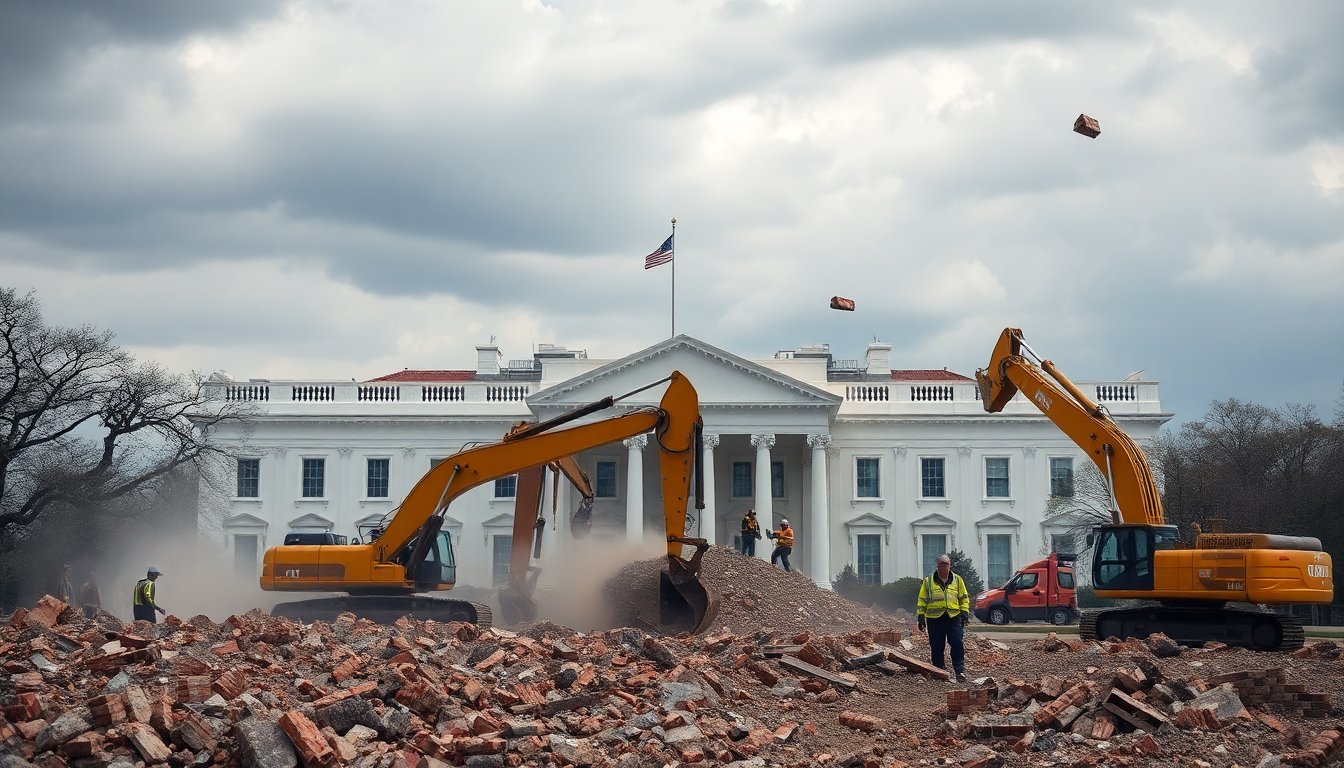Table of Contents
The demolition of the East Wing of the White House has raised significant concerns within both political and cultural communities. The rapid dismantling of this historic structure prompts questions about the implications of such an action. This event reflects a bold exercise of power, echoing tactics often associated with authoritarian regimes.
On October 23, the East Wing was reduced to rubble, leading to a surge of criticism from preservationists and the public. Former First Lady Hillary Clinton has been vocal in her opposition, asserting that the White House is a symbol for the American people, not merely a residence for any individual.
Public outcry and preservation concerns
As news of the demolition spread, public outrage intensified. Preservationists expressed alarm, emphasizing the architectural significance of the East Wing. They voiced concerns that new construction could overshadow the White House itself, fundamentally altering its historic character.
Clinton stated, “It’s not his house. It’s your house. And he’s destroying it.” Such remarks resonate with those who view the White House as a national treasure.
Shawn McCreesh, a White House reporter for the New York Times, noted that public response has been overwhelming.
“People are emailing me every five minutes,” he said, highlighting that the disturbing images of the East Wing’s destruction have left a lasting impact on the public consciousness. This sentiment underscores broader concerns regarding the preservation of historical sites.
Administration’s perspective
In contrast to the public outcry, the White House communications director dismissed these concerns as “pearl clutching” from those labeled as “losers.” President Trump, undeterred by the backlash, stated that the sounds of construction are “music to my ears,” framing the renovations as beneficial.
He expressed optimism about the future, claiming this transformation will enhance the White House for generations.
Among the proposed changes is a grand ballroom envisioned by Trump, projected to cost around $200 million. This ballroom is intended to be larger than a football field, accommodating approximately one thousand guests. Republican House Majority Leader Steve Scalise defended the initiative, asserting that funding would come from private donations rather than taxpayers, ensuring a permanent improvement for future presidents.
The historical significance of the East Wing
The Society of Architectural Historians has noted that the East Wing’s demolition marks the first significant alteration to the White House’s exterior since 1942. This historical context amplifies concerns about potential losses in architectural integrity and heritage. The East Wing served various important functions, including housing the offices of the First Lady and providing space for public events.
As the East Wing was dismantled, many pondered its implications for the future of the White House. The symbolism behind this drastic action raises questions about the preservation of national identity and memory. The East Wing was not merely a structure; it embodied a segment of American history, and its removal signifies a shift in the current administration’s regard for historical spaces.
Looking ahead
With the East Wing now gone, the future of the White House remains uncertain. Will the proposed changes enhance its legacy or diminish its historical essence? As construction progresses, preservation advocates will likely monitor developments closely, striving to protect the integrity of the nation’s most iconic residence.
The demolition of the East Wing has ignited a complex dialogue about the intersection of power, history, and identity. As the nation contemplates this significant event, the long-term perception of these changes, both architecturally and culturally, remains to be seen.





